And that's a wrap.
The 2016 season ended moments ago, with the New England Patriots' 34-28 overtime victory over the Atlanta Falcons in Super Bowl LI. The Patriots and Falcons have now joined the rest of the NFL in the offseason, where preparations for the 2017 campaign are well underway.
You know what that means, right? It's never too early -- or maybe, in this one case, it is just a bit -- for Power Rankings. What follows is an initial rendering from our ESPN voting panel (a group of more than 80 writers, editors and TV personalities) of how the league might stack up next season.
Click here to see the final regular-season rankings of 2016.

1. New England Patriots
2016 record: 14-2
Why they're here: It's tough to pick against coach Bill Belichick to field an elite team -- especially after the Patriots compiled the league's best record in a season that began with quarterback Tom Brady's four-game suspension. Brady will turn 40 in August, but for the moment, he is backed up by two quarterbacks who won starts without him in 2016. More than anything, this season reaffirmed Belichick's unique ability to build a team out of what other teams might consider indiscriminate parts.
What could change: The big question looming over the Patriots is when Brady will start playing to his age. It has to happen sometime, right? That will be the point when we start questioning the Patriots' short- and long-term fortunes. Trade rumors around backup Jimmy Garoppolo are illuminating. Would the Patriots really trade a player with such upside when their starter is nearing his 40th birthday?

2. Atlanta Falcons
2016 record: 11-5
Why they're here: The Falcons had the best offense in the league in 2016, and that does not appear to be a one-year wonder. Quarterback Matt Ryan led the NFL in QBR and won the league MVP, receiver Julio Jones was unguardable, and the tailback duo of Devonta Freeman and Tevin Coleman were more than complementary. From a personnel standpoint, the Falcons are poised for another high-scoring season.
What could change: The Falcons will suffer a big loss in offensive coordinator Kyle Shanahan, who will leave to be the 49ers' head coach. Ryan has plenty of experience in changing offensive coordinators, but he clicked better with Shanahan than with any of his previous coaches. Personnel is the most important part of success, but changing schemes can be tricky. The Falcons' defense, meanwhile, had a deficient pass rush in 2016, which went largely unnoticed amid Vic Beasley Jr.'s 15.5 sacks. Atlanta ranked No. 27 in pressure rate (24.9), a weakness that could have more impact next season.

3. Dallas Cowboys
2016 record: 13-3
Why they're here: The Cowboys were good enough to thrive after losing their top two quarterbacks before training camp began, and they are now positioned well for the long term at a number of key positions. Quarterback Dak Prescott (age 23) ranked No. 3 in QBR (83.0), and tailback Ezekiel Elliott (21) led the league in rushing (1,631), aided by arguably the NFL's best offensive line. It was, and will be, a strong combination.
What could change: The Cowboys could get a boost if linebacker Jaylon Smith, a second-round pick in 2016, can get back on the field after a knee injury cost him his rookie season. But the Cowboys' biggest issue in 2016, and one that could impair their run at a Super Bowl title, was a weak pass rush. They ranked No. 30 in the NFL with a 22.7 pressure rate. That's an especially glaring weakness in a playoff game against a top quarterback, and it could impact the Cowboys' 2017 fortunes.
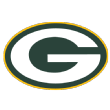
4. Green Bay Packers
2016 record: 10-6
Why they're here: Teams that finish the season hot leave behind strong memories. The Packers rode an eight-game winning streak into the NFC Championship Game, bolstered by arguably the best series of games in quarterback Aaron Rodgers' career. By the end, the Packers seemed to have solved the offensive issues that caused them a 4-6 start. Converted receiver Ty Montgomery appears to be a legitimate running back, and receiver Jordy Nelson finally made it all the way back from his torn ACL.
What could change: The Packers' defensive collapse in the NFC Championship Game -- they allowed 493 total yards to the Falcons -- was a reminder of their serial deficiency on that side of the ball in the Rodgers era. They must reckon with that fact alongside a scary realization that linebacker Clay Matthews will be 31 next season; he has had only one double-digit sack season in the past four. Defensive end Julius Peppers, 37, is a pending free agent. That's two of the Packers' top defensive playmakers.

5. Seattle Seahawks
2016 record: 10-5-1
Why they're here: Frankly, the Seahawks enjoy a national perspective as a team that plays lockdown defense and benefits from a quarterback in Russell Wilson who can mask any deficiency. Closer observers know that was not always the case in 2016, but the causes presumably can be rectified. Most important is the expected return of safety Earl Thomas, whose broken leg corresponded with a significant dip in defensive production. Opposing quarterbacks completed 65.3 percent of their passes in the games after his injury, with eight touchdowns and no interceptions.
What could change: To maintain this lofty status, the Seahawks will need a better offseason of personnel additions than they've had in recent years. Their offensive line still needs upgrading. They must address a defense with aging stars. Defensive lineman Michael Bennett will be 32 next season. Defensive end Cliff Avril will be 31, safety Kam Chancellor and cornerback Richard Sherman will be 29, and Thomas will be 28.

6. Pittsburgh Steelers
2016 record: 11-5
Why they're here: Voters aren't taking seriously the possibility that quarterback Ben Roethlisberger could retire this offseason, a possibility he discussed shortly after the Steelers' loss in the AFC Championship Game. It is difficult to imagine backup Landry Jones as an appropriate successor. Assuming Roethlisberger returns, the Steelers have shown the team that they can be when he's on the field with receiver Antonio Brown and running back Le'Veon Bell.
What could change: The Steelers are 3-11 against the Patriots in the past 19 seasons, including playoffs, and must decide whether they need to try something different to overcome New England in the AFC. Bell is eligible for a new contract, and Brown's behavior throughout the season and playoffs has called into question his long-term future with the franchise. That's a lot of uncertainty for a team ranked No. 6, but the assumption is that there will not be wholesale changes.

7. Oakland Raiders
2016 record: 12-4
Why they're here: The franchise turned a major corner with the ascendance of quarterback Derek Carr, who was having an MVP-caliber season and had the Raiders poised for a playoff run before he broke his leg in Week 16. Carr proved to be a transcendent player, as demonstrated by the Raiders' hapless playoff exit in the wild-card game, but this is not a one-man team. General manager Reggie McKenzie has built one of the NFL's best offensive lines, boosted by free-agent signings and strong drafts, giving the Raiders a dangerously balanced offense. They had the sixth-most rushing yards in the NFL (1,922) to go with Carr.
What could change: An unexpected transition at offensive coordinator is worth monitoring. Quarterbacks coach Todd Downing was promoted to replace Bill Musgrave, whose contract was not renewed. On paper, it will be difficult to improve substantially on an offense that ranked No. 6 in scoring (25.6 points per game). Downing is close with Carr, however. The Raiders also will address a defense that allowed 375.1 yards per game (No. 26 in NFL) but minimized damage by forcing 30 turnovers.

8. Kansas City Chiefs
2016 record: 12-4
Why they're here: You can at least count on a winning record from the Chiefs under coach Andy Reid, who has pulled that off in each of his four seasons with the franchise. The Chiefs were the best they've been under Reid in 2016, riding a defense that forced an NFL-high 33 turnovers and an offense that got playmaking from tight end Travis Kelce (1,125 receiving yards) and newcomer Tyreek Hill (12 total touchdowns). There is every reason to believe the Chiefs will continue to at least be a regular-season success in 2017.
What could change: The Chiefs must decide whether they can take the next step with quarterback Alex Smith, a cool and efficient operator who threw just 15 touchdown passes in 15 starts in 2016 and has never thrown for more than 23 touchdowns in any season. Would Reid pursue, say, Tony Romo to better capitalize on what might be a championship window? A new quarterback would certainly shake up the Chiefs' 2017 fortunes, either for good or for bad.

9. New York Giants
2016 record: 11-5
Why they're here: The Giants' defense took a major jump after a series of offseason additions, allowing the NFL's second-lowest points average (17.8 per game) and forcing 25 turnovers, tied for 11th in the NFL. The emergence of All-Pro safety Landon Collins and the consistency of defensive tackle Damon Harrison, who had the best approximate value (via Pro Football Reference) of any Giants defender in 2016, was especially promising. There is reason to believe that defense can be a strength of the Giants for years to come.
What could change: Teams always are smart to emphasize their superstar playmakers, but the Giants were too reliant on receiver Odell Beckham Jr. in 2016. He accounted for nearly twice as many yards from scrimmage (1,376) as any of his teammates. Without offseason improvement, an extended absence from Beckham would cripple the offense. The Giants will spend the offseason looking for ways to be more well-rounded.

10. Denver Broncos
2016 record: 9-7
Why they're here: Although they missed the playoffs, the Broncos didn't slip much defensively. They ranked fourth in scoring defense (18.6 points per game) and fifth in sack percentage (7.6 percent of opposing dropbacks). Entering a season with a new coach (Vance Joseph) and possibly a new quarterback (Tony Romo? Paxton Lynch?) leaves their short-term arc in doubt, but this team is structured well.
What could change: The Broncos have a decent idea what they have in quarterback Trevor Siemian: a level-headed young player with an average arm and below-average accuracy. (His off-target percentage of 20.9 ranked No. 27 in the NFL.) There is more upside for the offense if Lynch wins the starting job, especially with new offensive coordinator Mike McCoy, a great strategist despite his failure as the Chargers' head coach, calling plays.

11. Carolina Panthers
2016 record: 6-10
Why they're here: On one hand, this is a team that won the NFC South in three consecutive years from 2013-15. Quarterback Cam Newton is just one year removed from an MVP season and will be only 28 when the 2017 season begins. Coach Ron Rivera retains a strong following in the locker room. Those are all strong signs. On the other hand, Newton showed signs of wear in 2016 after years of extra hits absorbed via the run or long duration time in the pocket. It seems clear that a change in Newton's playing style is at hand; his 90 rushes in 2016 were a career low.
What could change: A draft loaded with running backs could take some pressure off Newton, and there could be some intriguing options available in free agency to address key needs. Would Vikings left tackle Matt Kalil join his brother, Panthers center Ryan Kalil, in Carolina? That might make some sense and would be an upgrade. The Panthers are projected to have more than $50 million in salary-cap space. The long-term future of linebacker Luke Kuechly, who didn't play after a Week 11 concussion, could impact the franchise's direction.

12. Washington Redskins
2016 record: 8-7-1
Why they're here: A clear shot at the playoffs slipped away via losses in four of the Redskins' final six games, including in Week 17 at home against the Giants, but they remain a franchise on the playoff fringe. The next step is clear. In plays of heightened importance in 2016, the Redskins weren't good enough to convert on either side of the ball. Their defense allowed the NFL's highest third-down conversion rate (46.6), and their offense ranked 29th in red zone efficiency (45.9 percent). Quarterback Kirk Cousins has thrown for 9,083 yards the past two seasons, but his Week 17 fourth-quarter interception scuttled Washington's playoff hopes.
What could change: The Redskins realized they needed a new direction on defense but wound up promoting linebackers coach Greg Manusky to replace fired defensive coordinator Joe Barry after failing to attract an external candidate. Manusky will be better off if general manager Scott McCloughan can upgrade at safety and defensive line this offseason. A long-term contract for Cousins could also smooth the nervous edge off his performances.

13. Baltimore Ravens
2016 record: 8-8
Why they're here: The Ravens have missed the playoffs and had non-winning seasons in three of the four seasons since they won Super Bowl XLVII. The last time that happened in Baltimore, coach Brian Billick was fired. Owner Steve Bisciotti spared coach John Harbaugh this time around. There is institutional respect for Harbaugh's work. But the general downward trend leaves outside observers to debate where he is headed: for a Bill Cowher-like second wind or for the end of a highly successful tenure that has run its course.
What could change: The addition of Greg Roman as a senior offensive assistant/tight ends coach could serve as a balance to offensive coordinator Marty Mornhinweg's pass-happy playcalls. (The Ravens led the NFL with 679 pass attempts in 2016, while their 367 carries were the third fewest.) General manager Ozzie Newsome also could help his defense by adding a pass-rusher, as Terrell Suggs approaches his 35th birthday and Elvis Dumervil (33) faces an uncertain future.

14. Detroit Lions
2016 record: 9-7
Why they're here: The Lions were a surprise playoff participant, but eight of their victories came via fourth-quarter comebacks engineered by quarterback Matthew Stafford. With a chance to win the NFC North, they lost their final three regular-season games. Then they turned in a dud in a wild-card loss at the Seahawks. As such, it's fair to wonder if the team benefited from above-average quarterback play and a coincidental series of unlikely events, rather than having put itself on a consistent playoff track.
What could change: Some of the Lions' offseason will depend on what they do, if anything, with Stafford's contract. It expires after the 2017 season, and there is no reason to believe he would come more cheaply at that point. With more than $40 million in projected cap space, the Lions are in position to distribute his cap hit evenly, rather than backload it, as they have done in previous deals. They also could help him by balancing an offense that tied for the fewest rushing attempts (350) in the NFL in 2016.

15. Houston Texans
2016 record: 9-7
Why they're here: The Texans enter the offseason as they always do: without an established starting quarterback. They probably maxed out in 2016 with the disappointing Brock Osweiler. His short- and long-range accuracy was brutal, resulting in the NFL's seventh-worst off-target percentage, and his average of 5.26 yards per dropback was the NFL's worst. In other words, no quarterback was less productive on a per-pass basis.
What could change: The Texans probably will have to replace Osweiler -- possibly with Tony Romo -- even though they owe him $16 million in 2017. Their defense, already stingy by AFC South standards (20.5 points per game), should welcome back a healthy J.J. Watt to match with Jadeveon Clowney, who broke through with his first Pro Bowl season in 2016. The Texans already have managed a smooth transition to defensive coordinator Mike Vrabel from incumbent Romeo Crennel, who will remain on staff.

16. Arizona Cardinals
2016 record: 7-8-1
Why they're here: No glance at the Cardinals can begin without noting the dramatic weakening of their explosive passing game. Their team average of yards per attempt dropped from No. 1 in the NFL in 2015 (8.5 yards) to No. 23 in 2016 (6.85). That's the meat of coach Bruce Arians' offense. As quarterback Carson Palmer approaches his 38th birthday -- or possibly retirement -- it's fair to wonder if personnel and schematic tweaks alone can produce a bounce-back year in 2017. Also, can the Cardinals really count on much more than they got from tailback David Johnson, who led the NFL in yards from scrimmage (2,118)?
What could change: The Cardinals could inspire longer-term confidence by demonstrating a plan beyond the Palmer-Larry Fitzgerald duo. Fitzgerald, who turns 34 in August, caught 107 passes in 2016 but ranked 84th among receivers with an average of 9.6 yards per catch. Adding a big, downfield target will help the Cardinals re-establish their schematic roots.

17. Tampa Bay Buccaneers
2016 record: 9-7
Why they're here: A 6-2 finish, powered by a much-improved defense, wasn't enough to satisfy observers who last saw this franchise make the playoffs 10 years ago. (The Buccaneers' most recent playoff victory was 14 years ago in Super Bowl XXXVII.) But there is plenty to build on here. Tampa Bay had the NFL's fourth-best scoring defense (17.1 points per game) over the final eight weeks of the season, and the duo of quarterback Jameis Winston and receiver Mike Evans is promising.
What could change: General manager Jason Licht will have a projected $65 million in cap space if he wants to augment the roster. Some of that will be needed for a Winston contract extension, which could come as early as 2018, but the Buccaneers have plenty to spend. Licht hasn't been shy in the past.

18. Minnesota Vikings
2016 record: 8-8
Why they're here: An avalanche of injuries mixed with some dysfunction reversed the fortunes of a team that won 16 of 21 games between the start of 2015 and Week 5 of the 2016 season. The franchise appears to have transitioned at quarterback, out of necessity, from Teddy Bridgewater to Sam Bradford. But no matter who plays, the Vikings have what is likely a multiyear rebuilding project at offensive line. Bradford isn't the type of quarterback who can thrive consistently without protection.
What could change: An overhaul of the offensive coaching staff, led by new coordinator Pat Shurmur, should better marry the team's personnel scheme, and the Vikings remain strong from a personnel standpoint on defense. But there are still a ton of unanswered questions. Whether or not tailback Adrian Peterson returns, the Vikings must find another featured runner. It's possible they'll need as many as four new starting offensive linemen. Also, Minnesota won't have a first-round pick to jump-start the process, as it gave it up to acquire Bradford last summer.
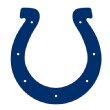
19. Indianapolis Colts
2016 record: 8-8
Why they're here: Years of failing to build infrastructure around quarterback Andrew Luck have caught up in consecutive 8-8 finishes despite playing in the weak AFC South. That failure cost general manager Ryan Grigson his job, but coach Chuck Pagano appears set to return for at least one more season. Colts quarterbacks were pressured on 34.6 percent of their dropbacks, tied for second most in the NFL this season. It takes a while to overhaul an offensive line, and Luck already is approaching his 28th birthday.
What could change: New general manager Chris Ballard has a strong reputation as an evaluator, which provides optimism that he can accelerate the process of rebuilding the Colts' line and finding Luck more playmakers. Ballard should have about $50 million in cap space to work with, and he'll need to spend some of it on defense, particularly on the edge and in the secondary.
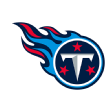
20. Tennessee Titans
2016 record: 9-7
Why they're here: It's a bit surprising to see them this low, but most observers probably don't favor the long-term success of a run-based offense in this era. The Titans rode that philosophy to their second winning season in eight years, finishing with the NFL's third-most rushing yards (2,187), including 1,287 from DeMarco Murray. But the real impetus for the Titans' surge was the improvement of quarterback Marcus Mariota. Beginning with Week 4, Mariota recorded the NFL's fifth-best QBR (75.3), throwing for 22 touchdowns and five interceptions in that span.
What could change: In reality, the Titans are poised to go places in 2017. They hold picks Nos. 5 and 18 in the upcoming draft, in part because of their decision to trade down from No. 1 in 2016, and they can focus on collecting more playmakers for Mariota. They are projected to have more cap space, about $70 million, than all but two NFL teams.

21. Miami Dolphins
2016 record: 10-6
Why they're here: Frankly, they're a little low for a team that won nine of its final 11 games to clinch a wild-card playoff berth with a youngish quarterback, a powerhouse tailback (Jay Ajayi) and a promising first-year coach. But it was the Dolphins' first winning season, let alone playoff berth, in eight years, and perhaps it takes more than that to generate believers. Quarterback Ryan Tannehill will spend much of the offseason rehabilitating a knee injury, a concern for his continued development under coach Adam Gase. Miami's defense, which allowed 382.6 yards per game -- fourth most in the NFL -- must adjust under new coordinator Matt Burke.
What could change: A draft focus on defense would be smart for Miami's outlook. Although the Dolphins are relatively strong up front, led by defensive tackle Ndamukong Suh, they could use multiple second-level playmakers at linebacker. The Dolphins might also consider moving guard Laremy Tunsil, the team's No. 1 overall pick in 2016, to his natural left tackle position.

22. Cincinnati Bengals
2016 record: 6-9-1
Why they're here: A streak of five consecutive winning seasons and playoff appearances ended with a thud in 2016. The Bengals' defense, once filled with playmakers, managed 20 takeaways, tied for 19th in the NFL. The future of their secondary is uncertain, given Adam Jones' recent arrest and the pending free agency of cornerback Dre Kirkpatrick. Plus, longtime left tackle Andrew Whitworth is due to become a free agent. The Bengals are very much a team in transition. To what? That remains unclear.
What could change: Re-signing Kirkpatrick and Whitworth would seem wise, at least for the short term. The Bengals are projected to have more than $47 million in cap space. It also could be argued that they didn't fall as far as they appeared to do. The Bengals lost six games by one score, a problem that could be minimized as they move from place-kicker Mike Nugent to Randy Bullock. Perhaps coach Marvin Lewis, who is seeking a contract extension, will use this offseason as a reset.

23. Philadelphia Eagles
2016 record: 7-9
Why they're here: There is high optimism for quarterback Carson Wentz, but his rookie season demonstrated the large learning curve he brought with him to the NFL. He finished the season ranked 26th in QBR (52.8) but displayed all the tools necessary to develop into a much better player. It's fair to question whether the Eagles have surrounded him with enough of an offense, however, to ensure that happens. Without many playmakers and with a receiving corps that had the NFL's sixth-highest drop percentage (5.1), the Eagles averaged just 5 yards per play (29th in the NFL) in 2016.
What could change: The Eagles are poised to make a jump if Wentz continues his development and the Eagles collect more explosive players. Even after surrendering four draft picks to acquire Wentz last season, they have the No. 14 or No. 15 overall pick after trading Bradford to the Vikings. (They'll participate in a coin toss with the Colts at the scouting combine.) This team's priorities should be clear.

24. New Orleans Saints
2016 record: 7-9
Why they're here: The Saints have been stuck in neutral for most of the past five years. They've finished 7-9 in four of those seasons as the window closes on the Drew Brees era. Although Brees is still playing at a high level -- he ranked fifth in QBR at 72.0 -- the team around him hasn't made much progress. The Saints have never won fewer than seven games with Brees, and he won't let them crash. But until there is reason to be optimistic about the Saints' defense, it will be difficult to expect more than middling results. Since the start of the 2012 season, New Orleans has allowed an average of 26.4 points per game -- third worst in the NFL over that span.
What could change: Defensive coordinator Dennis Allen will return with a mostly new staff. Perhaps that will help the Saints regain an edge. What they really need to do is hit on a pass-rusher or two in the draft. The Saints managed a sack on 4.8 percent of opposing dropbacks last season, sixth worst in the NFL. Improving that statistic might be their quickest path to a playoff return.
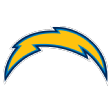
25. Los Angeles Chargers
2016 record: 5-11
Why they're here: Consecutive last-place AFC West finishes, a coaching change and franchise relocation all add up to a fair amount of pessimism for 2017. The Chargers have a lot working against them before they take their first offseason snap. Their offensive line has been in shambles for years, and their defense is in need of work after allowing an average of 25.7 points per game the past two years -- fifth highest in the NFL.
What could change: Defensive end Joey Bosa could blossom into an every-down game-wrecker in the mold of J.J. Watt after an entire offseason and training camp to refine his skills. New coach Anthony Lynn snagged Gus Bradley as his defensive coordinator, a good hire who could help the Chargers improve defensively in a hurry. If the Chargers can find a playmaking safety in the draft, their defense could at least hold its own in 2017.

26. Buffalo Bills
2016 record: 7-9
Why they're here: The Bills have moved on to their eighth coach since they last made a playoff appearance in 1999. Sean McDermott has a defensive background -- much like Rex Ryan, Dick Jauron, Gregg Williams and Wade Phillips before him -- but what the Bills really need to focus on is their offense. Quarterback Tyrod Taylor has shown some promise, but the front-office decision to bench him in Week 17 suggests the team will commence yet another offseason search for a quarterback. The cycle continues in Buffalo.
What could change: The Bills have some coaching strength on defense, including McDermott and coordinator Leslie Frazier, and they have the foundation of a strong unit. Under Ryan, the Bills ranked 13th in the NFL in opposing QBR the past two seasons (59.6). If 2016 rookies Shaq Lawson and Reggie Ragland can get healthy, the defense could be an early strength. The Bills' spot at No. 10 in the 2017 draft probably precludes the drafting of a quarterback who can help immediately, but it is high enough to gain immediate help in some fashion.
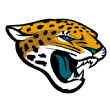
27. Jacksonville Jaguars
2016 record: 3-13
Why they're here: Nine consecutive non-winning seasons bottomed out with a 2016 record that tied for the second worst in franchise history. Quarterback Blake Bortles took a step backward in his third season, finishing with the NFL's third-lowest QBR (49.2) and completion percentage (58.9) and forcing an end to coach Gus Bradley's tenure. If new coach Doug Marrone and vice president of football operations Tom Coughlin remain committed to Bortles, as they appear to be, you won't see much public confidence in the Jaguars' chances to improve in 2017.
What could change: The Jaguars have some nice pieces on defense that could coalesce in a different coaching environment. If Coughlin's tough love filters onto the field, a group that includes defensive linemen Dante Fowler Jr., Malik Jackson and Yannick Ngakoue -- along with cornerback Jalen Ramsey -- could prosper. The Jaguars also have the No. 4 overall pick and, barring a trade, will have five top-five picks on their roster when training camp opens.

28. Los Angeles Rams
2016 record: 4-12
Why they're here: After extending their streak of consecutive non-winning seasons to 13, the Rams aren't getting any benefit of the doubt. Their young quarterback, Jared Goff, had the NFL's lowest QBR among all quarterbacks who started at least four games. (The Rams were 0-7 in his starts.) They hired a 31-year-old head coach, Sean McVay, whose bright offensive mind is likely to be mitigated by inexperience in his first season. What's more, the Rams don't have a first-round draft choice, thanks to the 2016 trade to acquire Goff, to help upgrade an anemic offense that ranked last in the NFL -- and it wasn't close -- in scoring 13.6 points per game.
What could change: There is high optimism around the league that McVay will eventually connect with and elevate Goff. Perhaps that could come earlier than expected, and while he's at it, maybe McVay can figure out how to reverse tailback Todd Gurley's disappointing second season. Acquiring one or two legitimate playmakers -- the Rams are projected to have more than $40 million in cap space -- could make a big difference. McVay also made an excellent first hire in defensive coordinator Wade Phillips, who will have a fair bit of talent to work with, including the NFL's best defensive tackle in Aaron Donald.

29. Chicago Bears
2016 record: 3-13
Why they're here: Hired with an expectation to repeat the fixes he has executed elsewhere, coach John Fox has instead stumbled to a worse record (.281 win percentage) than predecessor Marc Trestman (.406). Fox's usually sound defense has been terrible, allowing the eighth-most points in the NFL the past two seasons, and he was unable to coax stability from quarterback Jay Cutler. (In fact, Fox appeared to favor journeyman Brian Hoyer last season.) The Bears finished 2016 with the NFL's fourth-lowest Total QBR (45.7) and appear poised to start over at the position in 2017.
What could change: Rookie running back Jordan Howard is a bright spot, having amassed the NFL's second-highest total of rushing yards (1,313), and he could take the pressure off a new/young quarterback in 2017. The Bears also could get a boost from the presumed return of multiple high-end players who suffered injuries in 2016, from offensive linemen Kyle Long and Hroniss Grasu to receiver Kevin White to cornerback Kyle Fuller.

30. New York Jets
2016 record: 5-11
Why they're here: The Jets had four quarterbacks on their roster last season, and it's quite possible that none of them has a future with the team. Ryan Fitzpatrick and Geno Smith are pending free agents. Bryce Petty was awful (19.4 QBR) in a four-game audition. Christian Hackenberg received so little practice time that it's difficult to know anything about him in an NFL context. The Jets found that they weren't nearly as close to competing as they thought they were after a 10-6 season in 2015. It's going to be tough to do much about that this offseason. The Jets are projected to be more than $8 million over the 2017 salary-cap limit, the worst projected situation in the league.
What could change: They should be able to find a blue-chip player with the No. 6 overall pick in the draft. Who knows? The Jets wouldn't be the first team to pull a decent starting quarterback from nowhere. (They did so just two years ago with Fitzpatrick.) They could upgrade their draft assets or possibly get a good player in return if they trade defensive lineman Sheldon Richardson.
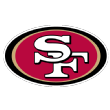
31. San Francisco 49ers
2016 record: 2-14
Why they're here: If it weren't for the Browns, the 49ers would have absorbed a national focus as perhaps the NFL's weakest franchise. They've lost 19 of their past 23 games and will undergo their third coaching transition in as many years, the first team to do that in 40 years. The 49ers don't have a single quarterback under contract for 2017, and years of disjointed drafts have left them with one of the NFL's most barren rosters. The 49ers were one of two teams without a single Pro Bowl player in 2016, and in ESPN Insider's most recent roster rankings, they ranked No. 32. General manager John Lynch is an interesting but entirely unpredictable hire.
What could change: Presumptive coach Kyle Shanahan has proved that he can adapt his offense to different styles of players, having utilized a read-option with Robert Griffin III in Washington and a version of the West Coast scheme with Matt Ryan in Atlanta. That bodes well for the 2017 49ers' offense, regardless of who is on the field. The defense has some building blocks, including linemen Arik Armstead and DeForest Buckner, and could establish some footing with a few draft hits or free-agent signings. The 49ers are projected to have more than $70 million in salary-cap space.

32. Cleveland Browns
2016 record: 1-15
Why they're here: The worst team of the decade (.259 win percentage since 2010) dispatched most of its best players and predictably produced the NFL's worst team in 2016. That's a lot of "worsts." The Browns bottomed out without addressing their long-term need at quarterback and still have glaring personnel weaknesses at most every position, none worse than offensive line. Their top playmaker, receiver Terrelle Pryor Sr., is a pending free agent.
What could change: The Browns own four spots in the first two rounds of the 2017 draft, including the No. 1 and No. 12 picks, and could inject life into their quarterback job in a hurry. Everything about a full rebuild flows from there. The recent re-signing of linebacker Jamie Collins, meanwhile, offers hope that the Browns will put to use the enormous amount of salary-cap space they're projected to have: nearly $100 million.
